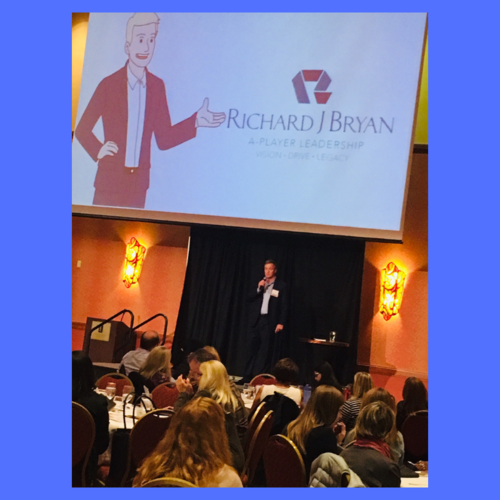My success as a leadership keynote speaker hinges on my ability to quickly captivate an audience and hold their interest. When I was first starting out on the leadership keynote speaker circuit, I studied hundreds of speeches—everything from powerful business presentations through the decades, to Martin Luther King’s iconic “I Have a Dream” speech—and found that the most effective speakers, regardless of subject, use exactly the same techniques as engaging storytellers.
If you think about it, it makes perfect sense: we’ve been listening to stories our entire lives. From an early age, stories teach us how the world works, how to understand our place in that world, and how to navigate the many challenges it throws our way. Regardless of our audience, when the information we want to convey is neatly packaged within the familiar construct of a compelling narrative, it instantly becomes both more relatable and more memorable.
What’s more, according to Christopher Booker, best-selling author of “The Seven Basic Plots: Why We Tell Stories,” the entire pantheon of storytelling, from Beowulf to Jaws and beyond, can be reduced to seven archetypal plots: (1) Overcoming the Monster, (2) Rags to Riches, (3) The Quest, (4) Voyage and Return, (5) Rebirth, (6) Comedy and (7) Tragedy.
These basic themes recur throughout every kind of storytelling, from the bookshop to the boardroom, and most any anecdote you choose to tell will likely fall naturally into one of them. Here’s a great infographic that breaks down each of the seven narrative types into easy-to-follow storytelling formulas—complete with examples of the types personal anecdotes that work best for each.
Bill Stainton, an award-winning TV producer, writer and performer with 29 Emmys to his name, helped me narrow my focus even more—he told me to think of my leadership keynote speaker presentations as sitcom or soap opera episodes! These highly consumable narratives, he says, always begin by seducing you with a secondary storyline that leaves you wanting more information. The primary storyline, which weaves through the next 30 minutes, is supported by three tertiary sub-plots. Every successful show ends with its strongest storyline…and ideally a cliffhanger to sustain your interest until the next episode.
My conversation with Bill was an eye opener, and I’ve been using the simplified framework below (which, incidentally, is based on Aristotle’s basic beginning-middle-end story structure) for years:
1. Opening: Your audience comes into the room with lots on their mind. In order to tear them away from their technology, you have to really engage them with something they can feel. I often start with a humorous story or anecdote (no more than 3–5 minutes) to create a bond with the audience. The goal of your opening should be twofold: establish the way things are, then introduce your vision of what could be. Using the natural tension you’ve just created, you’ll use the rest of your presentation to bridge the gap between what is and what will be.
2. Support: As you build tension between your current reality and future vision, each bit of content you present should be supported by a short vignette in order to bring the content to life. This will help the audience think of examples in their personal or professional lives, which instantly makes your content more relatable. When your audience is emotionally as well as intellectually engaged, they’re more likely to retain what you have to say and apply it to their own lives. And, as you continue to compare present and future, the future will naturally become more appealing as your audience comes to crave resolution.
3. Closing: You want to leave the audience wanting more—but you don’t want to burden them with an overwhelming laundry list of to-dos. Make sure your final call-to-action is elegant, simple, attainable and inspiring, so your audience can understand the incredible rewards of adopting your vision for the future.
Check out my vlog (video blog) for additional info: https://vimeo.com/295860491
Related Topics:
4 Ways to Foster Meaningful Growth in Your Employees
6 Tips to Keep You from Becoming a Seagull Manager
3 Tips for Becoming an Abundance Mentality Leader


